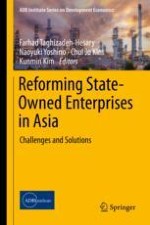2021 | OriginalPaper | Buchkapitel
13. State-Owned Enterprises and Cluster-Based Industrialization: Evidence from Bangladesh
verfasst von : Monzur Hossain
Erschienen in: Reforming State-Owned Enterprises in Asia
Verlag: Springer Singapore
Aktivieren Sie unsere intelligente Suche, um passende Fachinhalte oder Patente zu finden.
Wählen Sie Textabschnitte aus um mit Künstlicher Intelligenz passenden Patente zu finden. powered by
Markieren Sie Textabschnitte, um KI-gestützt weitere passende Inhalte zu finden. powered by
